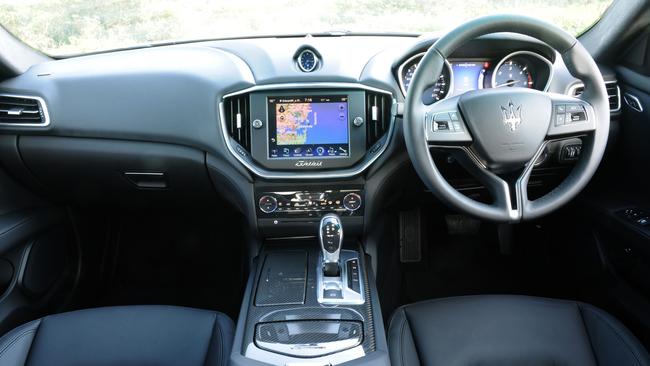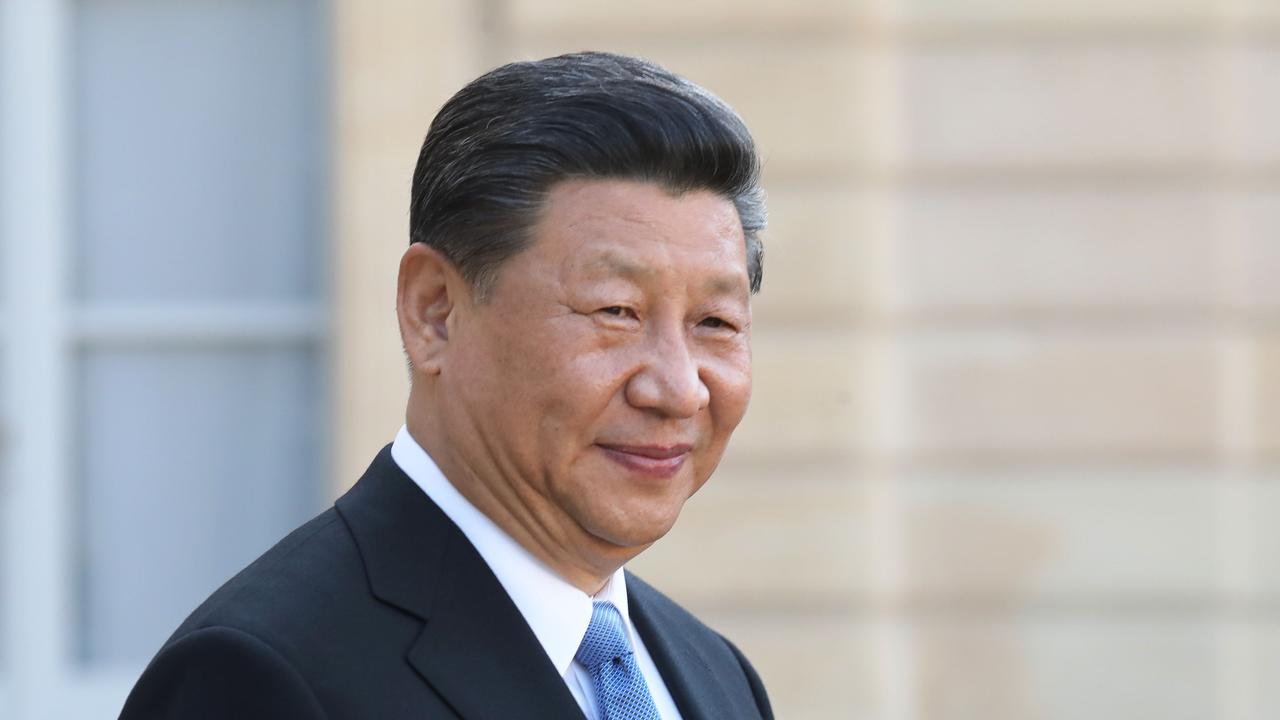Maserati Ghibli targets the mainstream
MASERATI is being transformed from a niche maker of sporty, exclusive Italian machines into an alternative to Porsche. Will it work?

I’M Dorothy. When I visit the assembly halls of car companies I stand before the Wizard, little dog in hand. The robotic welding arms flail, the sparks fly and a terrifying voice booms out of the darkness, “Would you like a coffee?”
As an economic proposition, modern auto-making relies on both speed and overwhelming scale, A to Z, and when, as a visitor to an assembly hall, you step to the edge of this river of finished goods murmuring past, it’s nothing less than amazing. Best “How It’s Made” episode ever.
But I’m also a sceptical Kansas schoolgirl — hey, I like being Dorothy! — so when in June I visited Maserati’s new, 100,000sq m assembly hall in Grugliasco, Italy, outside Turin, I had a lot of questions. And believe me, they had answers. This place, on the site of the former Bertone works, is the linchpin in Maserati’s sweeping reinvention being led by Fiat Chrysler CEO Sergio Marchionne.
Long story short: Mr Marchionne envisages restructuring Fiat Chrysler like Volkswagen — as a globe-girdling conglomerate of many brands, with efficiencies in engineering, design, procurement, finance and access to markets. In order to win, Fiat Chrysler must realign the brands in an Alfred Sloan sort of way, to provide a car for every purse and purpose, all while achieving triple-digit sales growth and record profits across the board. In five years. Easy.
Luxury is key. Mr Marchionne’s plan would transform Maserati from niche maker of sporty, exclusive Italian machines into a mass-class competitor/alternative to Porsche. By 2018, Maserati will offer a Porsche 911/Jaguar F-Type fighter, the Alfieri, in 2+2 coupe and cabrio configuration. The long-awaited SUV, called the Levante, is due in 2015 and will be built in the reconstructed Mirafiori facility. A reboot of the big four-seat coupe/cabrio, the Grand Turismo, drops in 2018. On the technical side, Maserati plans on offering a spread of engines to accommodate local tastes, from a small-displacement diesel (unavailable in the U.S.) to crackling petrol V8s, and rear-biased all-wheel drive.
Maserati’s global-sales target of 50,000 deliveries in 2015 is a whopping 3.2 times the 2013 volume, and most of those cars would be built right here. Grugliasco is like Emerald City, except the Munchkins are unionised.
The Ghibli, our test car, firmly anchors the brand in the realm of the attainable, with a base price of $US66,900 ($71,000) in the US. The car I drove from Modena to Turin was the S Q4, with all-wheel drive and the sport package, and so it was about as spendy as they get: $US89,970.
You know, Jimmy, it might just work. Luxury goods are blowing up globally and Chinese status-seekers would buy Maseratis with square wheels. It would be easy to fail upward in such a climate. The euphonic name Maserati has proved to have almost magical properties, and the styling has the power to cloud minds. People want Italian luxury. But on the evidence of the Ghibli S Q4, I just can’t bring myself to believe, no matter how many times I click my heels.
Here’s the problem with going to see the Wizard. Once you see the little man pulling the levers behind the curtain — or Mr Marchionne exiting the loo — whatever lingering mystery of brand you had is ruined. On the eve of Maserati’s utter re-re-imagining of itself — it was little more than a decade ago that Ferrari brought Maserati back from the dead — I am at a loss to say what a Maserati is, or means.
As if to highlight the disconnect between its indelible past and identity-challenged present, the company chose to name this conservatively styled four-door after the ultimate Maserati sex machine, the Giugiaro-designed Ghibli coupe and Ghibli SS convertible (1967-1973). Seriously, is nothing sacred?
Does Maserati stand for evocative and passionate styling? Because the Ghibli kind of just lies there. Built along the same assembly line as the larger, louche four-door Quattroporte, and on the same mechanical underpinnings, Ghibli could easily have been called QP SWB (short wheelbase). The face of the car is strong and forward focused, with a low, dramatic hood line and a lower grille like a boxer’s mouthguard. Fender portholes? Check. Light lines pull the hood tight to the windshield glass.
But then the silhouette falls apart as, nose to tail, the packaging imperatives of rear headroom and large boot (500 litres) swell the car beyond any prettiness. The rear wheel well is dwarfed under the rear-quarter bulk, which is a fatal stylistic flaw in my book.
I get it: This is an executive saloon, conservative in the spirit of Northern Italian tastes, understated so as to play in as many markets as possible. Alas, the world is full of quietly tasteful sedans, and Maserati’s argument with consumers must be based on emotion, not reason.
Now, you would think given Maserati’s rather checkered ownership history, and given its critical position on Mr Marchionne’s chessboard, that the very last thing Maserati wants is to be accused of is building an Italian Chrysler. And yet, behold, the audio/navi centre touch screen from the Dodge Charger, and Dart, and Fiat 500 …. Much too much of Chrysler’s human interface, from the Ram truck “Start” button to the sluggy Garmin navigation systems, made the voyage from Chrysler’s headquarters in Auburn Hills.
It’s not that the parts binnage itself is of bad quality, but it’s an opportunity cost for Maserati: If you are buying an Italian car — in itself a pretty counterintuitive, My Way choice in personal finance — you are aligning yourself with sets of tastes. You want an expressive cabin and distinctive Italian flair, right? Right?
Anyway, the parts binnage on the Ghibli must get dialled back.
One part I’m happy to see shared is the aluminium twin-turbo, direct-injection 3.0-litre V6, cast in Indiana, then shipped to Maranello, Italy, to be fettled by Ferrari. There are two versions of this power plant in the Ghibli, one generating 345hp and a more highly strung mill putting out 404hp and a towering 406 pound feet (550Nm) of torque from 1750-5000 rpm. With the hot engine and ZF eight-speed automatic transmission, the Ghibli S 4Q strides to 60mph in 4.7 seconds on its way up to a quarter-mile speed of 105mph, in 13.4 seconds.
While doing, the Ghibli makes all kinds of snarling, bleating noises, thanks to the active-exhaust plumbing. Imagine how great it would be if it didn’t weigh a rather shocking, county fair-winning 2.1 tonnes, if Car and Driver’s scales are to be believed. Oof! Not since Titian have we seen a Venus so chubby.
Is a Maserati a precision driving instrument? You’d hope so. But the Ghibli’s weight works against it, as does the light and generic steering feel. Don’t get me wrong. The Ghibli can do a decent impression of a sporty car on open roads. Body roll is well contained, nothing’s squirrelly, and the Ghibli’s deep stance gives it lots of cornering grip.
And yet the car’s dynamics do not blow my mind. Very Dodge Challenger-ish, actually. Even though it has 50/50 front/rear weight distribution, the Mazzer’s suspension (wishbone/links, front/rear) has lots of prudent understeer — push, if you like — dialled into it. The car’s throttle responsiveness — due to the software, not the engine — is surprisingly gradual. Hell-oooo? This behaviour occurs in each of the drive modes, from Normal to Sport to ICE (“Increased Control and Efficiency”) modes. Only when the car is in Sport mode, and manually shifted, does the engine response perk up. Then it gets properly fast. The Ghibli punctuates its hectic upshifts with a warm, muffled crackle in the exhaust.
And yes, I’d love a coffee.
Go to The Wall Street Journal.


